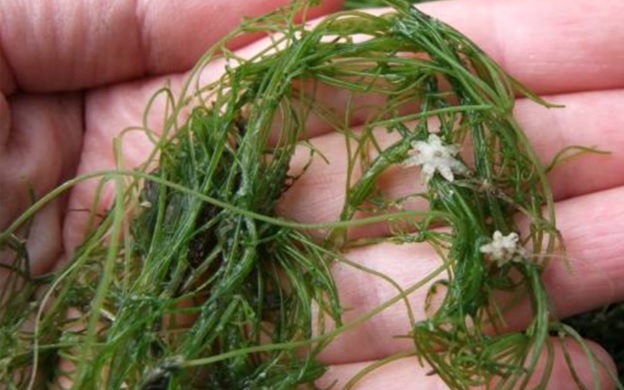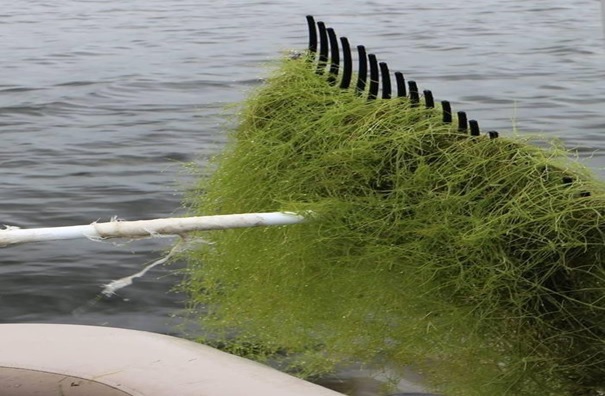Starry Stonewort – A New Invader
While most cottagers are familiar with the invasive Eurasian watermilfoil (Myriophyllum spicatum) in Chandos Lake, there is a new potentially worse invasive species at our doorstep. That new invader is starry stonewort (Nitellopsis obtusa). A type of macro alga, it is not a true plant by classification. However, it behaves just like a plant. Starry stonewort is characterized by translucent green leaves that grow in whorls off branching stems. It gets its name from the small, white, star shaped bublis it produces. Accidentally introduced to North America from Eurasia on the ballast water of ships. It was first discovered in the St. Lawrence River in 1978 and has quickly spread inland. It is a significant ecological threat to Ontario lakes with established populations in Lake Simcoe, Lake Scugog and now the Kawartha Lakes Region.
Starry stonewort is an unlike many aquatic plants we have. It is highly calcium dependent, requiring high levels of calcium to grow. If touched, you can feel the calcium granules on the leaves. Starry stonewort has no roots. It attaches to the lakebed with clear filaments and grows suspended in the water column. It can grow in water depths of 0.5 to 10m, with individual mats being 3m thick. Large swaths of starry stonewort create stagnant conditions underneath which there is little oxygen or water flow. Starry stonewort mats are unsuitable habitat for fish and other animals to live. It also competes directly with native aquatic plants and lowers biodiversity. Human activities are impact has starry stonewort’s growth habit chokes out open water areas, limiting boating, swimming, and fishing.




